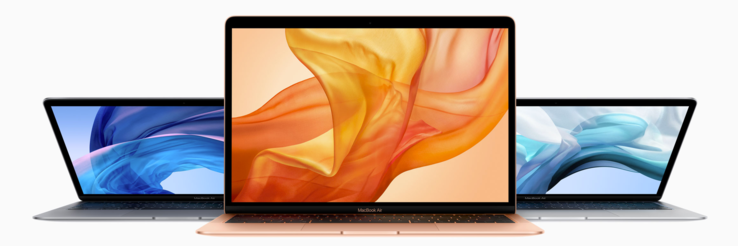
(Image credit: Future) MacBook Air (M1, 2020) review: Power and performance Apple may not be a brand you often associate with value for money and ultra-competitive prices, but as the new MacBook AIr proves, maybe you should.

We actually reviewed the £999 model, and we were incredibly impressed with the results, and that version undercuts competitors like the Dell XPS 13 by quite a bit. So, for budget-conscious creatives, the MacBook Air (M1, 2020) is an easy recommendation.
#MAC AIRBOOK REVIEW PRO#
That higher specced version features similar specs to the MacBook Pro M1 model, including an 8-core CPU and 8-core GPU, but the Pro has a smaller SSD of 256GB, and is £50 more expensive. The extra GPU core should give the MacBook Air a decent performance bump when it comes to graphically intensive tasks, and the extra storage space will be very welcome for digital creatives who need to store lots of large files. You can also buy a more powerful model for £1,249, and this comes with an 8-core CPU and 8-core GPU, 8GB of RAM and 512GB of storage. Speaking of unusual features (once again), Acer throws in an HDMI-to-VGA cable, too, so you can hook up the S5 to a conventional monitor.Impressively, Apple has launched an updated laptop for the same price it was asking for the previous model – which itself was actually cheaper than the 2019 version! While the MacBook Air certainly can’t be described as a budget laptop, it still remains excellent value for money – more so, in fact, due to it offering improved specs at the same price. The power on/off button is located toward the back corner of the left edge, right behind an SD/MMC card reader on the right edge, the headset jack sits behind a paper-clip-size reset hole, something you don’t usually see on notebooks. The curved edges house a couple of buttons, too. The MagicFlip panel also conceals a fan vent. The Thunderbolt port on the S5 is the furthest to the right in the area covered by MagicFlip the others, from left, are an HDMI and two USB 3.0 ports. The port lineup departs a bit from the usual Ultrabook offering, most notably with the inclusion of a Thunderbolt port–a relatively new and small I/O port, found in current Macs and MacBooks, that provides high-speed powered connectivity for a wide range of peripherals and displays. That’s definitely unusual in laptop land.
#MAC AIRBOOK REVIEW BLUETOOTH#
The clickable Elan touchpad is roomy, smooth, and precise, but if, like me, you prefer a conventional mouse, Acer has been kind enough to include a Bluetooth mouse.

But Acer uses a conventional layout so at least they’re located where you expect them to be. Keys are a tad mushy and very slippery, and they have no backlighting. However, the bottom does get a bit warm after prolonged use. Most of the chassis is fashioned from a magnesium-aluminum alloy that feels smooth and surprisingly solid on the inside, given how thin the notebook is.

The S5’s good looks don’t stop with its black brushed aluminum exterior. The Aspire S5’s 5.5-hour battery life is about average for its class and screen size: It won’t get you across the Atlantic or the Pacific, but should be sufficient for most transcontinental flights. Hard-core gamers can, of course, do better, but general users who want to sneak in the occasional Dirt 3 session shouldn’t be put off. It’s worth noting that the S5 did very well in our gaming tests, even though it has no discrete graphics. Other scores that contribute to WorldBench were also generally above average, although not enormously so. That overall score includes the S5’s stratospheric 195 on our WorldBench 7 test suite, thanks mostly to its spectacular startup and hard-drive file operation scores, which typically rise dramatically with SSDs. That solid-state drive, combined with the Core i7 Ivy Bridge Ultrabook CPU, helped the S5 to its highly respectable overall performance score of 82, on a par with other top performers on our Ultrabook chart, including the Dell XPS 13.
#MAC AIRBOOK REVIEW WINDOWS 7#
Configured with one of Intel’s fastest current ultraportable CPUs, the Core i7-3517U running at 1.9GHz (with a maximum turbo speed of 3GHz), 4GB of RAM, integrated HD 4000 graphics, a 256GB solid-state drive, and the 64-bit edition of Windows 7 Home Premium, the Aspire S5 is on the pricey side at $1399 (as of July 18, 2012), but not spectacularly so for its components (especially the SSD).


 0 kommentar(er)
0 kommentar(er)
